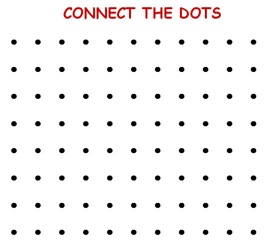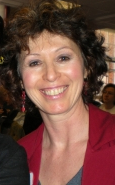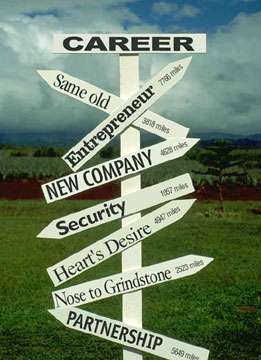I regularly evangelize the idea of using stories as a way of communicating in the job search. But another way job-seekers can benefit from stories is by learning from the stories — or case studies — of others. With this entry, I begin a short series of job-interview stories that may prove instructional for others.
Multiple interviews over a many-month period
Few interview-process horror stories can top this case study. “Lynne Blake” tells a mind-boggling saga of an interview process that lasted more than nine frustrating months. The epic was so excruciating that Blake gave it a title: “I Could Have Had a Baby … Or Water-Boarding a Candidate.”
Description of interview process: The position was with a very large, very well-known defense contractor, Blake recalls. “A former colleague of mine works with them and raved about how good they are with their people. She kept watching the posting boards, sending me various roles until there was finally one that was a great match,” Blake says. “That was June 2008.” Blake noted that the position was a key start-up role with responsibility for the Pan-European countries. “Compensation was north of $200K,” Blake says, “and the internal business plan called for the person to be on board by Q2 or Q3 of 2008.”
Blake goes on to tell the story of the interview process in diary form:
“July 2008: I have phone screen with internal recruiter. He says he will put my credentials forward and set up phone screens with two or three internal people. He has me log onto the HR Web site and fill out extensive application and background-checking information.
“August 2008: During the first week of August, I have the phone screen, a very general conversation, with the hiring manager.
“September 2008: During the first week of September, I have a phone screen with a person who runs a parallel team for a different division. He has a far different view of what the role needs from the hiring manager’s view, including a difference of opinion on where the new hire will be located and what background they are looking for.
“I then attempt three follow-ups with the internal recruiter for the position over four weeks trying to get an update and more details on strategy. I get no reply.
“October 2008: I finally track down the internal recruiter. He says they don’t really know what they are looking for. There are four people involved, and all four have a different profile in mind. They will try to reach ‘some kind’ of agreement in the next week or so.
“Last week of October: I receive a voice message that says they have shortlisted four candidates, and they would like to have me come for face-to-face interviews.
“November 2008: At this point, I have tried to reach the recruiter for three weeks. Finally I have my “inside” friend locate the hiring manager’s phone number for me. When I reach him, he tells me that the internal recruiter resigned, and they were unable to locate any of my information (what happened to all the stuff online in their HR system?). Thank goodness I called, he says, as all the other candidates have been interviewed. They will contact me to arrange a trip to Belgium for a face-to-face ASAP.
“A new internal recruiter calls me on Monday of Thanksgiving week but says he really has no information about the role. He will have his personal assistant call to arrange the trip because they want me to go on Thanksgiving weekend, which is three days away. The personal assistant organizes a trip that gets me to Belgium at 7:30 a.m., but with a return flight of 10 a.m. the same day. (She didn’t know that you actually get to Europe the day after you leave the U.S.) Unfortunately the travel agent cannot change anything for a candidate and the personal assistant and recruiter have left for the holiday! Finally I call the office in Europe and ask them to contact the travel agency to resolve the situation.
“December 2008: I have a meeting in Belgium the first week of December and obtain a third opinion of what type of person they want. We now have no agreement on the type of background needed for the role, where the person will be based, whom the person will report to, and how the role will be structured (expat or local EU hire). The company closes on Dec. 19 for the rest of the year. I receive no further contact at all after the interview in Belgium.
Read the rest of the saga in the extended entry.
“January 2009, eight months after initial application: On Jan. 9, I catch up with the hiring manager. I am fairly straightforward with him. I explain that the project I’m working is over at the end of January, and I either need to start a job search or look for a new project, but before I do so I’d like to find out where they are on this position. He tells me that they are now down to three candidates, and if I will give him one more week, he will let me know (he does, however, let me know that I am his candidate of choice).
“On Jan. 13, the hiring manager calls me to tell me that they have decided to make me an offer, but the internal recruiter who has to handle the offer will be off until Jan 22. On Jan. 23, the recruiter calls me, and his first question is ‘what kind of package am I expecting?’ I shoot straight and tell him that no one has discussed money since the first conversation, so what is the salary? We agree on the broad parameters, including where the position will be based and the structure of the package, but he has no idea of a start date. I explain that this is the critical issue for me since I have to arrange to complete my project and give notice on my long-term-stay flat. He says he’ll call me back. He also tells me that they are having problems verifying my educational credentials; the only number they have for my college is the one that was on their internal Web site documents. I look up the college Web site for this very well known business school in Atlanta and give him the number.
“On Jan. 26, the recruiter calls me and says they want to have me ‘on the ground’ in Belgium by March 1. He is just waiting for the final signatures on the package. I tell him that I would also like to at least meet my immediate manager face-to-face before I go. He says he will check on that, and we agree that I will have the offer in hand by the end of the week.
“February 2009 (nine months and counting): On Feb. 2, I get four messages from the recruiter. Could it be the offer at long last? No! They have three or four other people who would like to interview me before extending the offer. I’m too mad to even attempt calling the hiring manager to find out what’s going on, so I wait a day. I explain about the position I’m now in, but he says ‘Well, my boss told me to go ahead, but now she wants to interview you plus have two or three other team members talk to me. What else can I do but agree?’ He does tell me that I am the only candidate left, so if they don’t agree on me it means starting over from ground zero.
“I claw back my notice on the flat (and pay a $75 fee to cover their costs of already running an ad and taking applications), but since I have already started to transition my client to another project manager, I will just have to suck that up.
“I actively start my job search. I’ve been passively searching but was hesitant to start too much just to tell recruiters, friends, and contacts: “Never mind, Big Jerky Company just came through.”
“February 9 and 10 is where it really starts to get insulting/funny/surreal. I go to Dallas for the interviews. I am scheduled to talk to the UK office via conference call. I am put into a conference room and dialed into the call. Twenty minutes later, no one has picked up on the other end. I go to the receptionist, and she cannot even find the two people who are supposed to be on the call with me. After 45 minutes, she locates one of them who claims to be “too busy” to do it today, and we arrange for her to call me at home the next day at 11 a.m. They never locate the gentleman who was supposed to be on the call.
“The hiring manager’s boss then calls me to her office. There is another person there, but other than his name, I am not given any information about who he is or why he’s there. The total time I spend in this interview with both people is 25 minutes. At the end the boss says ‘Well, I really wanted someone with deep EU government contacts’ (which I do not have). Where the heck has she been for the past nine months? So, I took two days off from work, traveled a total of seven hours, and spent the night away for a 25-minute interview.
“On Feb. 11, the woman from the UK does not call at the appointed time. On Feb. 12, my mobile phone rings at 6:15 a.m. I learn upon checking my messages that the call was from the woman from the UK, but since I do not answer my phone 24/7, she leaves me a message to call her in the UK!
“I try twice and leave two messages. I call the hiring manager for his feedback from the Dallas interview and to get the UK woman’s email address. The hiring manager doesn’t have the address, and despite being in Dallas today, he is unable to get any feedback on the interview as his boss is “too busy.”
“On Feb. 13, I call the UK office and mash numbers until a human answers. I have to talk to three people, but finally someone gives me the woman’s email address. We have a short email exchange, and we agree that the interview will take place on Monday Feb. 16 at 8 p.m. her time and 2 p.m. my time. I am very specific to document the appointment in just that way to avoid any issues on the time difference. I arrange to leave the office early to be at home for the call.
“On Feb. 16, I miss the call from the UK woman while I am in shower. It is 8 a.m., and I get a very snotty message from the woman about not being there at the appointed time. I forward her the email she sent showing 8 p.m. her time, 2 p.m. mine, and ask if I still need to be available at 2 p.m. or not. At 1:40 p.m., she calls and says she has only 5-10 minutes, but can we at least start? Her first question: When is my start date set? I explain that nothing has been agreed upon as all is on hold for these conversations. She says she does not have time to talk in depth, but she will call back later on in the week. No call comes.
“On Feb. 19, the assistant for the hiring manager calls to tell me that everyone is so busy right now (except for me apparently), and that he still has no feedback from the Dallas interview. I tell him that I’m busy too and cannot continue to rearrange my schedule and take time off from work only to be blown off time and time again. He apologizes and says he will make sure that his boss calls me on Friday, Feb. 20. No call arrives that day.
“As of Feb. 22, I realize that I am in the very same position I was last month with my landlord, but now I’m also out of work. I decide that the time had come to fish or cut bait. I drop the hiring manager an email. He’s in Dubai and calls me immediately. I explain that if I cannot get an answer by the end of this week, I will have to move forward on either accepting another project with my existing firm, which would mean that I will have a longer notice period, or withdraw my candidacy completely. He says he understands and it (finally) sounds as if he’s getting a little mad with his people as well. Says he will push to have a resolution by the end of the week.
“The company finally comes back and gives me an offer after I phone up and say ‘sorry, but I’m moving on.’ The offer is incredible and way over and above the other offer I got in the same week.”
Outcome: Blake says she spent two weeks debating the offer and talking to about a dozen people inside the company via LinkedIn to gain insight. She finally decided to take the offer. “Every employee I spoke to-without exception-claimed that the company is very good to its employees and that working there is a great thing,” Blake says, “so I have to assume that it can only go up from here.” Blake realizes it may shock some people that she accepted the offer but, she says, “in today’s market a company with this kind of stability and a package like this one do not come along easily.”
Blake learned after speaking to numerous people in the hiring chain about the situation that although the company’s process is normally lengthy, “this one was way over the average.”
Blake feels she was fortunate in that the discussion started when she was still employed, “leaving me a bit of breathing room while they dawdled.”
Lessons learned/What the candidate would do differently if faced with the same situation: “If this situation occurred in the future,” Blake says she would shorten the time between contacts and be very diligent about continuing her search. “It truly was not until I had decided that I was ‘over it’ that and would move on that they realized [they would lose me] and actually moved forward.”
Blake’s advice to others in the same situation: “Do not follow the natural tendency to sit back waiting for the offer. After they pulled back the supposed offer in January, I became very focused on my search and found that I was getting a lot more play in other areas.”
Alerting the employer that you have other opportunities in the wings can jolt the hiring team into action. You can simply ignore the indecisive company and pursue other opportunities. But you might also consider a polite ultimatum. Express your understanding of the time the employer needs to make a decision but that you also have decisions to make. Suggest a deadline. Two weeks to a month is reasonable. Tell the employer you would love to come on board, and remind the decision-maker of what you’ll contribute to the bottom line. But suggest that if the employer can’t decide by the deadline, you’ll need to withdraw your candidacy.










